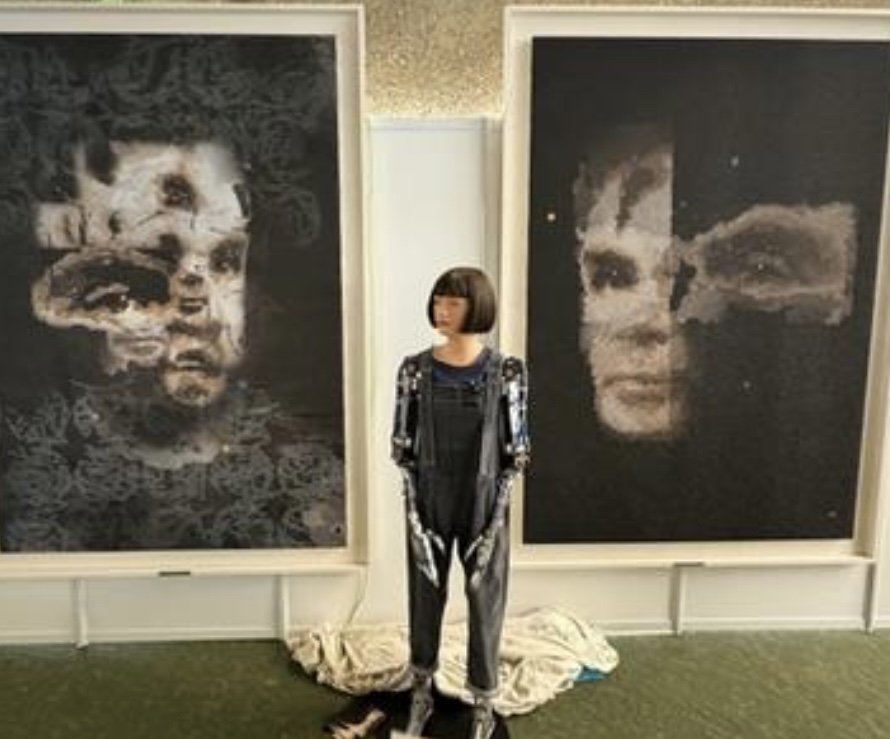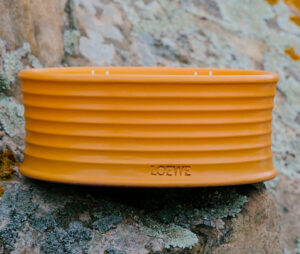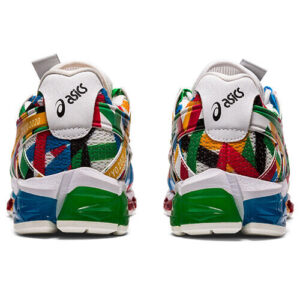In a groundbreaking event that has set the art and technology worlds abuzz, Ai-Da, an AI-powered humanoid robot artist, recently sold a painting for over $1 million at Sotheby’s. Named after the pioneering mathematician Ada Lovelace, Ai-Da represents a new frontier in the intersection of art, artificial intelligence, and human creativity. As one of the first robotic artists to sell her work for such a staggering amount, Ai-Da has ignited debates about the nature of art, the role of AI in creativity, and what this means for the future of the art world.
Ai-Da’s success challenges our long-held notions about art and the human touch that has traditionally defined it. How does a robot, devoid of human emotion, memory, or intention, create pieces that command such high value? Is this the beginning of a new era of creativity driven by algorithms and machines? To understand Ai-Da’s achievement and its implications, let’s delve into how she was created, the impact of her work, and what her success signifies for the future of art.
Ai-Da is the brainchild of Aidan Meller, a British gallery director, and a team of engineers, roboticists, and artists. Named after Ada Lovelace, the 19th-century mathematician who is considered the first computer programmer, Ai-Da is a highly sophisticated machine with a unique combination of AI algorithms, robotic engineering, and artistic capability. Her robotic arm and fingers, which are equipped with cameras and sensors, allow her to draw, paint, and sculpt based on inputs from her environment.
Ai-Da’s creation wasn’t merely a technological experiment; it was a statement about the potential of AI to engage in creative processes. The team behind Ai-Da designed her to work autonomously, meaning she doesn’t simply follow commands but makes decisions based on her programming and input data. Through a complex web of machine learning algorithms, Ai-Da interprets visual data, processes patterns, and creates art in a way that mimics human decision-making, albeit without the emotional component. This autonomy is part of what makes her work so intriguing, as each piece reflects a unique, algorithm-driven response to the world around her.
The $1 million painting Ai-Da created was not merely a random collection of colors and shapes; it was crafted through a blend of AI-guided pattern recognition and mechanical precision. Her artwork often combines abstract forms, bold colors, and repetitive patterns—choices influenced by the data she processes but ultimately generated by her unique algorithms.
Critics and fans alike have praised Ai-Da’s work for its striking visual appeal and originality. Some art enthusiasts see her pieces as a new form of conceptual art, where the idea behind the creation process is just as important as the final result. Ai-Da’s work raises important questions: Can a machine, devoid of human experience, create art that holds emotional or intellectual weight? Or is her painting merely the result of complex algorithms mimicking creativity without truly understanding it?
While traditional artists create from a place of emotion, personal history, and interpretation, Ai-Da’s creations are rooted in data analysis and pattern recognition. Yet, for those who view art as a reflection of the time in which it’s made, Ai-Da’s work represents our era’s preoccupation with technology, artificial intelligence, and the merging of humanity with machines.
Sotheby’s decision to include Ai-Da’s work in its prestigious auction house marked a significant endorsement of AI art within the high-end art market. The sale of Ai-Da’s painting for over $1 million was not just a financial achievement; it was an acknowledgment that AI-generated art has a place in the same space as traditional art created by humans.
This milestone sale suggests that the art world is becoming increasingly open to non-human artists and exploring how machines can contribute to creative expression. The amount Ai-Da’s work fetched reflects a market that is willing to embrace—and invest in—AI as a legitimate source of art. It also points to the growing interest in digital and tech-driven art, with collectors seeing value in pieces that push the boundaries of what art can be.
Ai-Da’s success at Sotheby’s raises profound questions about the role of machines in creativity and whether AI will reshape our understanding of art. If machines can create art, where does that leave human artists? Should art always be driven by human experiences, or can machines offer a new perspective that broadens our definition of creativity?
For many, the appeal of Ai-Da’s work lies in the philosophical questions it poses. Ai-Da doesn’t create out of personal passion or intent; her work is an outcome of coded instructions and data inputs. Yet, her art is no less impactful because of its machine origins. In fact, her work challenges us to think about the meaning of art itself—is it about emotional expression, or can it also be a product of innovation and intellectual exploration?
Ai-Da’s success may inspire other AI artists, ushering in a new genre of “post-human” art where machines are creators. This shift could lead to collaborations between human artists and AI, exploring hybrid forms of art that combine human intuition with machine logic.
While Ai-Da’s work has garnered admiration, it also raises ethical questions. Who owns the rights to AI-created art? Is it the robot, the programmer, or the organization behind the project? In Ai-Da’s case, her creators and the gallery behind her would retain rights, but as AI artists become more autonomous, questions about authorship and ownership will become increasingly complex.
Additionally, Ai-Da’s art brings up concerns about originality. Unlike human artists who create based on life experiences, Ai-Da’s work is an amalgamation of data and algorithmic patterns. This has sparked debates about whether her creations are truly original or simply an automated response to inputs. Can originality exist without intentionality? Or is the concept of originality changing in the age of AI?
Public reaction to Ai-Da’s work and her high-profile sale has been mixed. Some view her work as a fascinating evolution of the art world, a bold new direction that embraces the future. Others are more skeptical, questioning whether a machine can genuinely create art or if Ai-Da’s success is simply a reflection of novelty and technological fascination.
For fans, Ai-Da represents the future of creativity, where technology and art converge to create new possibilities. Her work is seen as part of a broader trend where technology is democratizing and expanding the scope of artistic expression. Meanwhile, critics worry that AI art undermines the value of human creativity, reducing it to algorithmic patterns rather than genuine human insight.
Ultimately, the polarized response to Ai-Da’s work underscores the broader societal ambivalence toward AI. As machines become more capable of performing traditionally human tasks, questions about the limits and purpose of AI are increasingly relevant. Ai-Da’s painting, by challenging our understanding of art, also forces us to confront our relationship with technology.
Ai-Da’s $1 million sale at Sotheby’s is more than just a record-breaking transaction; it represents a pivotal moment in the art world’s relationship with artificial intelligence. Her work invites us to rethink what constitutes art and challenges our assumptions about creativity, originality, and emotional expression. For some, her painting may symbolize the blending of human ingenuity and machine intelligence, while others may view it as a mere novelty.
As AI technology advances, the line between human and machine-made art may blur further. Ai-Da’s success may pave the way for more AI artists, pushing the boundaries of artistic expression. The future of art may involve collaborations between human and machine, where AI tools are used not just to execute commands but to explore new ideas and forms.
In a world increasingly driven by technology, Ai-Da’s work is a symbol of how AI is reshaping our cultural landscape. Whether viewed as an innovative breakthrough or a controversial deviation from traditional art, Ai-Da’s painting is a testament to the ever-evolving nature of creativity. As we continue to explore the possibilities of AI in art, one thing is clear: the future of art is no longer exclusively human, and Ai-Da has played a pivotal role in opening up this new frontier.
No comments yet.








